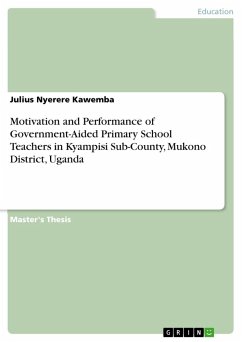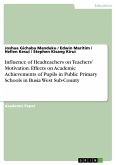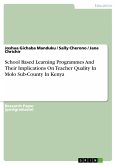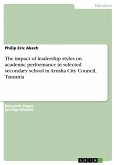Master's Thesis from the year 2010 in the subject Pedagogy - The Teacher, Educational Leadership, Makerere University (Educational Management), language: English, abstract: There seems to be controversy as to what really motivates employees (teachers). In the researcher's own observation, different employees tend to have preference for different motivational factors and therefore perceive them as being motivational to their performance. This is because we all differ in our interests and understanding and therefore react differently on different aspects. While one employee may prefer being offered a car, another will prefer recognition, promotion and appreciation instead. Thus making it difficult to understand what really motivates employees to perform well. The first chapter presents the background, problem statement, purpose, specific objectives, research questions, hypotheses, scope and significance of the study.Several previous scholars have attempted to relate motivation to job performance. Therefore, the purpose of the second chapter is to review literature relating to the variables in the study. It also presents the theoretical review, conceptual framework or model and literature related to the three respective objectives. The related literature is presented in line with the objectives that guided the study. It is presented in subheading of; remuneration and job performance, work environment and job performance and administrative policies and job performance.The third chapter presents a description of how the research was carried out. It gives systematic steps and key areas that were followed in the empirical part of the study. These included; the design, population, sampling strategies, data collection methods and instruments, data collection methods and instruments, data quality control, procedure and data analysis.Chapter four presents the description of the background variable of respondents, the dependent variable (job performance) and testing of hypotheses.Chapter five presents the discussion of the results of the study derived from the data presented in Chapter four basing on the respective research hypotheses. The discussion leads into varying conclusions and a number of recommendations, areas of further research are given.
Hinweis: Dieser Artikel kann nur an eine deutsche Lieferadresse ausgeliefert werden.
Hinweis: Dieser Artikel kann nur an eine deutsche Lieferadresse ausgeliefert werden.








